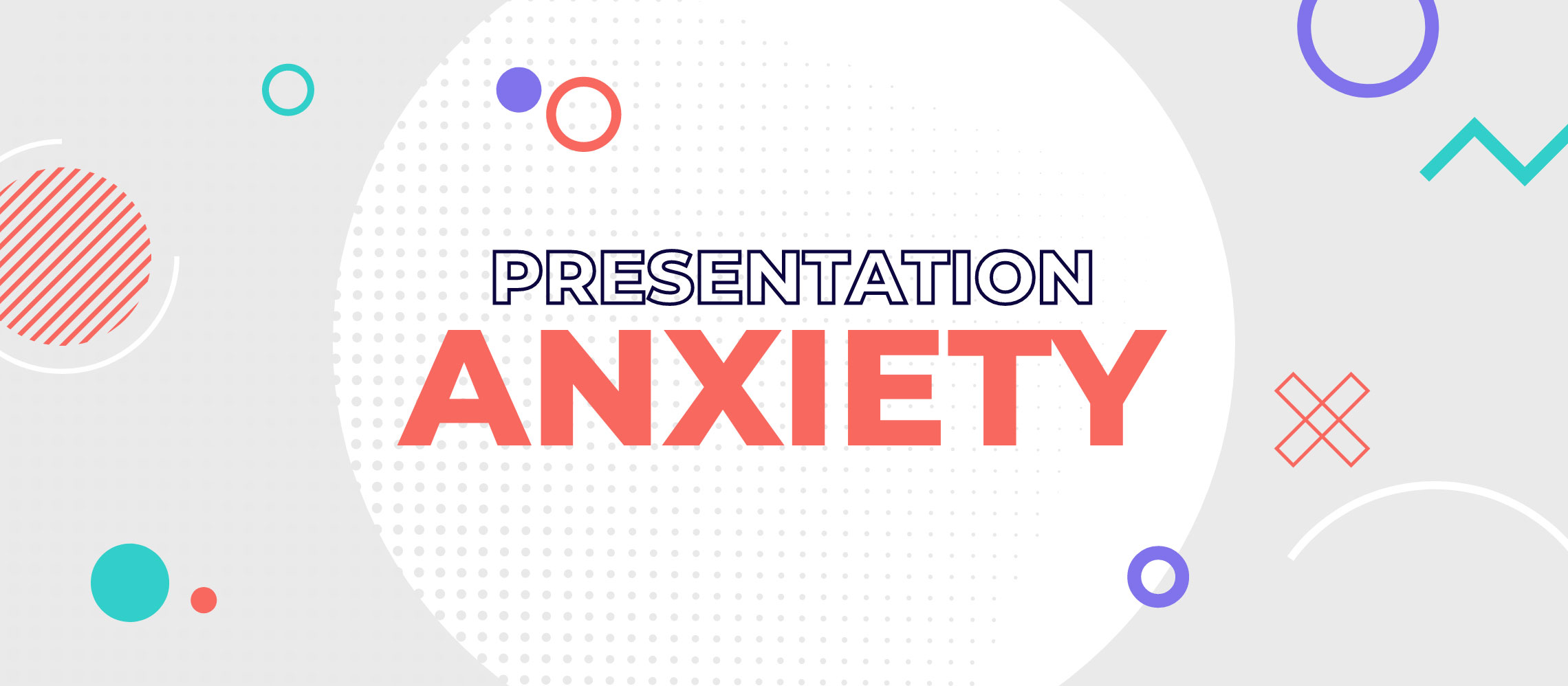Stage fright. Presentation anxiety. The yips.
Whatever you call it, that feeling of dread when you’re about to speak in front of an audience can be crippling, and ruin all the hard preparation you’ve put in.
Whether you’re giving your hundredth keynote speech or delivering five minutes of results over Zoom to a few colleagues, the anxiety of public speaking and performance- no matter how unfounded – is real and can get in the way of your messaging.

Public speaking can’t hurt you, but presentation anxiety is a major thing that can stop a good presentation from becoming great. Whether you get the experts in, or do it yourself, having a great story, with beautiful imagery and dynamic animation gives you a huge advantage over most presentations.
But what good is a show-stopping deck when you’re shaking like a leaf and unable to get a single word out? Relax. Take a breath. We can help.
Our team of seasoned PowerPoint specialists and communication pros have put their heads together to deliver some practical tips that will empower you to get a handle on your nerves and turn them into something positive.
7 tips to help with presentation anxiety
1. Face your fears
Nobody ever died from talking on stage. Not without underlying health conditions, anyway. Our dumb limbic brain thinks that it can, which is why it gives us the same bodily responses as if a grizzly bear was chasing us: fast heart, heave sweating, quick breathing and often, the sudden urge to lose your breakfast, one way or another.
So let’s educate our dumb limbic brain. Show it there’s nothing to be afraid of.
This ancient part of the brain doesn’t listen to logic, so even if you ask yourself what you are afraid of a sensible answer like “looking stupid, forgetting what you need to say, being unable to use the tech, or even falling flat on your face as you take to the stage” won’t cut it.

2. Set yourself up for success
SHOW your brain that you can control all of these things. If you fear forgetting your lines, make sure you know your notes and script off by heart. Learn it like you’d learn your lines in a play, so the sequence of the presentation is second nature. Then rehearse.
Seriously, rehearse what you need to say over and over again. Rehearse in front of a mirror to see how you look as you speak, and even film yourself to watch it back later.
The same applies to your tech. If you’re using PowerPoint to show slides, rehearse along with it so you know exactly what image is coming up next, and how you can cycle through your slides smoothly. Also get to know your laptop, screen and/or projector. Do you know what to do if you accidentally make the screen go black? (Press ‘B’ on your keyboard. You’re welcome!)
3. Your body is a temple
What else can you control? Your physical state. OK, so the shakes and the sweats might turn up, but there are things you can do to mitigate this.
Eating healthily, exercising regularly, and even getting involved with the likes of yoga and meditation can all help to reduce your overall stress levels. And, the less stressed you are, the better you can handle presentation anxiety.
So limit your caffeine intake, ease off on the alcohol, reduce the amount of sugar you consume, and by all the gods make sure you get a good night’s sleep each night. The healthier your body and mind, the better a person you’ll be, and speaking in front of an audience won’t seem like so big a deal as it once did.
4. Positive vibrations > Presentation anxiety
There will be nervous energy. That’s normal, and it’s fine. But when you dwell on the negative side, you can end up dooming yourself to failure.
Don’t let these negative thoughts internalise. Instead of being nervous about speaking, think about how excited you are to share your ideas. This conscious positivity and enthusiasm will come across to your audience, making you appear much more engaging.
As public speaking coach Sarah Lloyd-Hughes suggests on her blog, try visualising your public speaking experience. Pick apart the negative parts of the scene and amplify what makes you feel powerful. Now let this new scene manifest in your mind.
Remember we said ‘deep breath’ at the beginning? That’s not just a cliché; breathing can play a huge part in reducing presentation anxiety. When we’re worked up and the adrenaline starts flowing, we often won’t realise how short of breath we become. This can really harm your delivery if you let it.
Take a few evenly-paced, deep breaths to fill your lungs and gather your nerves effectively.

5. Fake it before you make it
So far so good. You can control your practice, your body, but what about your performance and confidence? Clearly, this isn’t something that you can just turn on and off. Here’s an industry secret: everyone suffered from presentation anxiety and sucked at it when they first started, and everyone practised like hell to get better.
Here’s an early video of public speaking master Steve Jobs being extraordinarily nervous, and threatening to “throw up at any moment.”
So do what people have been doing in business for generations: fake it. Exude confidence, even if you don’t really feel it. No one will know – it’s your secret and you have the power.
Start by greeting people as they file in and engage with them on a human level. If the audience is mostly comprised of friends and colleagues from work, chat and joke with them as you would normally to put them at ease. If you’re presenting to a group of strangers, be it as part of a sales pitch or possible job opportunity, get them talking before you start to pick up on a few pointers, namely what is it they or their organisation wants and needs.
If you can seamlessly transition from a casual chat into your rehearsed and amazing presentation script, you’ll come across as a true professional- whether you feel like it or not.
6. Let’s talk body language
When you’re speaking, pay attention to your posture. Sit or stand in a confident manner, with your head held high and your arms to the sides.
People will listen more to you if you establish eye contact more frequently, so don’t be tempted to simply point at your PowerPoint slides and read them out loud. After all, these people have come to see what you have to say, not how well you can turn your head from them and point at a screen.
And it’s not just for the sake of the audience, either: in Harvard researcher Amy Cuddy’s body language TED talk, she reveals that simply holding ‘assertive’ body positions can increase testosterone in the brain while reducing stress hormone cortisol – for both men and women.
This means an increase in confidence levels and a reduction in presentation anxiety: you’ll feel more empowered and even be perceived that way by others.

7. We’re all friends here
And while we’re talking about your audience, one absolutely huge thing to remember is this: they are on your side. They want you to smash it, not fail it.
Don’t be desperate to seek approval: remember that you’re the one giving up professional or personal time to share your knowledge. Your audience appreciate that and are there because they want to listen. They are willing you on, impressed with how you’ve got the confidence to be up there when most of them would be scared stiff.
Say goodbye to presentation anxiety
All of these tips are simple, effective, and well within your control. Take them on board, and presentation anxiety will quickly become something that other people fear.


